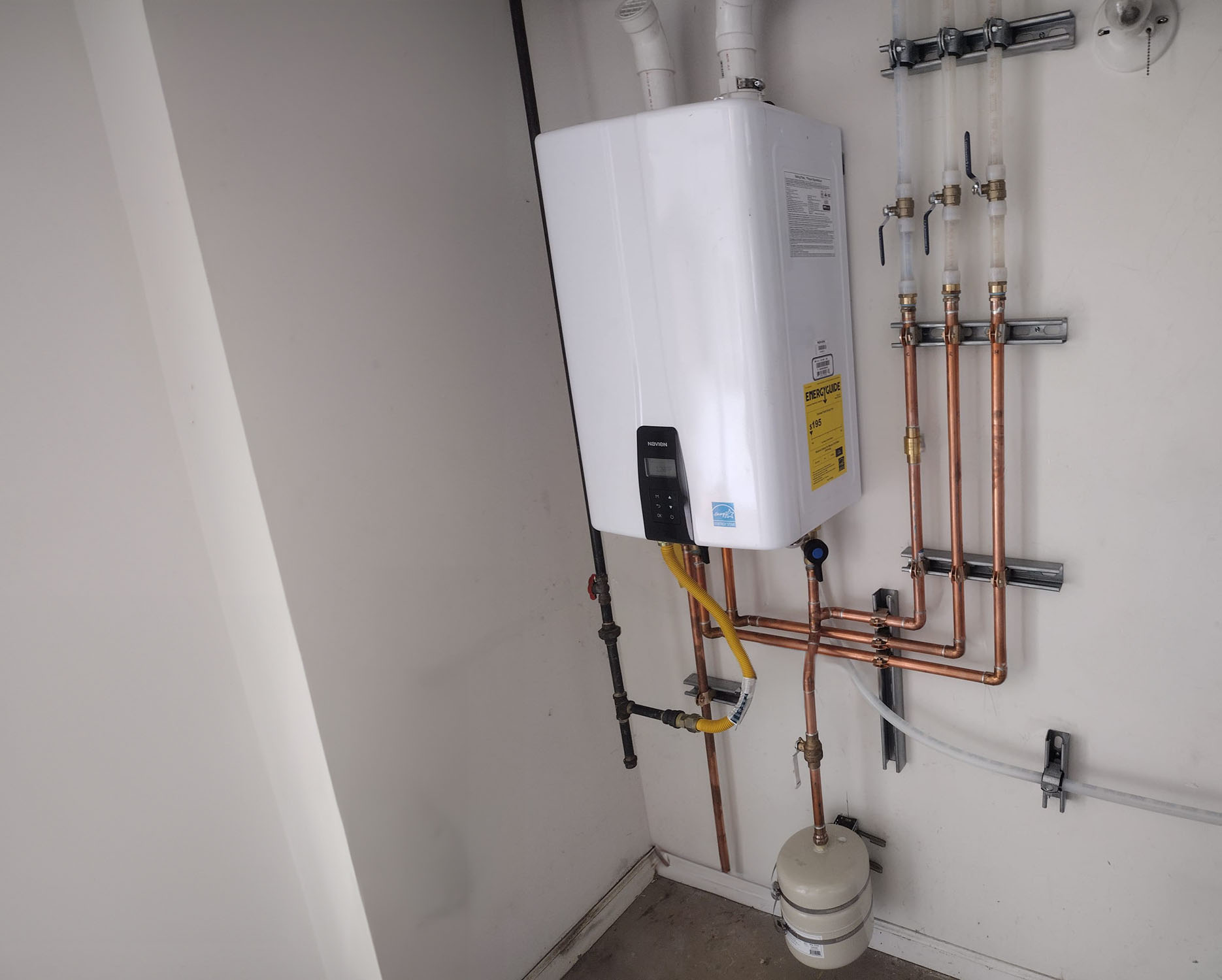

On-demand Hot Water
Your trusted partner for professional home services. Quality workmanship, guaranteed satisfaction.




- HEP
- On-demand Hot Water
On-demand Hot Water | Tankless Water Heater Install | Plumbing | White Pine
Enjoy endless, energy-smart showers in White Pine with HEP’s on-demand hot water plumbing experts. Our certified technicians handle every aspect of your tankless water heater install, from precise sizing and venting to flawless hookups, so you can swap bulky tanks for a sleek unit that heats water the moment you need it. No more running out of hot water, no more standby heat loss—just lower utility bills and extra space in your utility closet.
HEP’s local team arrives on time, respects your home, and backs every job with rock-solid warranties and 24/7 support. Whether you’re finishing a remodel, upgrading an aging system, or building new, we tailor the perfect solution for your family’s daily routines and budget. Schedule your appointment today and discover why White Pine trusts HEP to make hot water hassle-free.
FAQs
What is an on-demand (tankless) water heater and how does it work?
A tankless water heater heats water only when you open a hot-water tap. Cold water flows through a heat exchanger that is warmed by natural gas or electricity, and the unit delivers a continuous stream of hot water within seconds. Because there is no storage tank, the system eliminates standby heat loss and can keep producing hot water as long as the tap is open.
What are the main benefits of installing a tankless water heater in my White Pine home?
• Endless hot water: Perfect for back-to-back showers, large tubs, or simultaneous appliance use. • Space savings: Wall-mounted units free up closet or garage space compared to 40–50 gal tanks. • Lower energy costs: The U.S. Department of Energy reports 24–34 % savings for households that use ≤41 gal per day, and 8–14 % for high-demand homes. • Longer life span: Tankless units typically last 18–25 years—almost double a conventional tank. • Cleaner water: With no tank, there is no rust or sediment buildup. • Eco-friendlier: Reduced gas or electricity consumption lowers your carbon footprint.
How do I choose the right size (flow rate and BTU) for my household?
Proper sizing depends on two numbers: 1. Total flow rate you’ll need at peak demand, measured in gallons per minute (GPM). Add up the GPM ratings for fixtures you may run at the same time (e.g., 2.0 GPM shower + 1.5 GPM kitchen sink = 3.5 GPM). 2. Temperature rise required, based on White Pine’s incoming groundwater temperature (≈55 °F) and your desired hot water temperature (120 °F). That means a 65 °F rise. Our technicians calculate both factors and recommend a unit—typically 160,000–199,000 BTU/hr for most three-bath homes—so you’ll never run out of hot water even on cold winter mornings.
What does the installation process involve and how long will it take?
A standard replacement in White Pine usually takes 4–8 hours, completed in one day: 1. Site assessment and permit, if required by Jefferson County codes. 2. Safe removal and disposal of the old tank. 3. Upgrading gas line or electrical circuit to meet the tankless unit’s higher input. 4. Installing Category III/IV venting or PVC venting for condensing models. 5. Mounting the heater on the wall, connecting water, gas/electric, and condensate drain. 6. System flush, leak test, and user orientation. Complex jobs—such as relocating the unit or adding a water softener—may extend the project to two days.
Will a tankless water heater really save me money on utilities?
Yes. Because there is no standby heat loss, tankless units only fire when you need hot water. In White Pine, where many homes use propane or electric tanks, switching to a properly sized gas tankless model can cut water-heating energy use by 20–40 %. For electric tankless units, savings depend on your usage pattern and local kWh rates, but most homeowners see payback in 4–7 years. Additional incentives may include manufacturer rebates and occasional TVA energy-efficiency credits.
What maintenance does a tankless system require and how long will it last?
Annual service keeps the warranty valid and performance optimal: • Descale (flush) the heat exchanger with white vinegar or citric solution to remove mineral buildup—especially important in White Pine, where water hardness averages 6-10 grains per gallon. • Clean the inlet screen filter. • Inspect the vent, burner, and condensate line. With yearly maintenance, a quality unit can last 20 years or more. Most manufacturers offer 5-year parts and 12-year heat-exchanger warranties, and our company provides optional service plans for hassle-free upkeep.